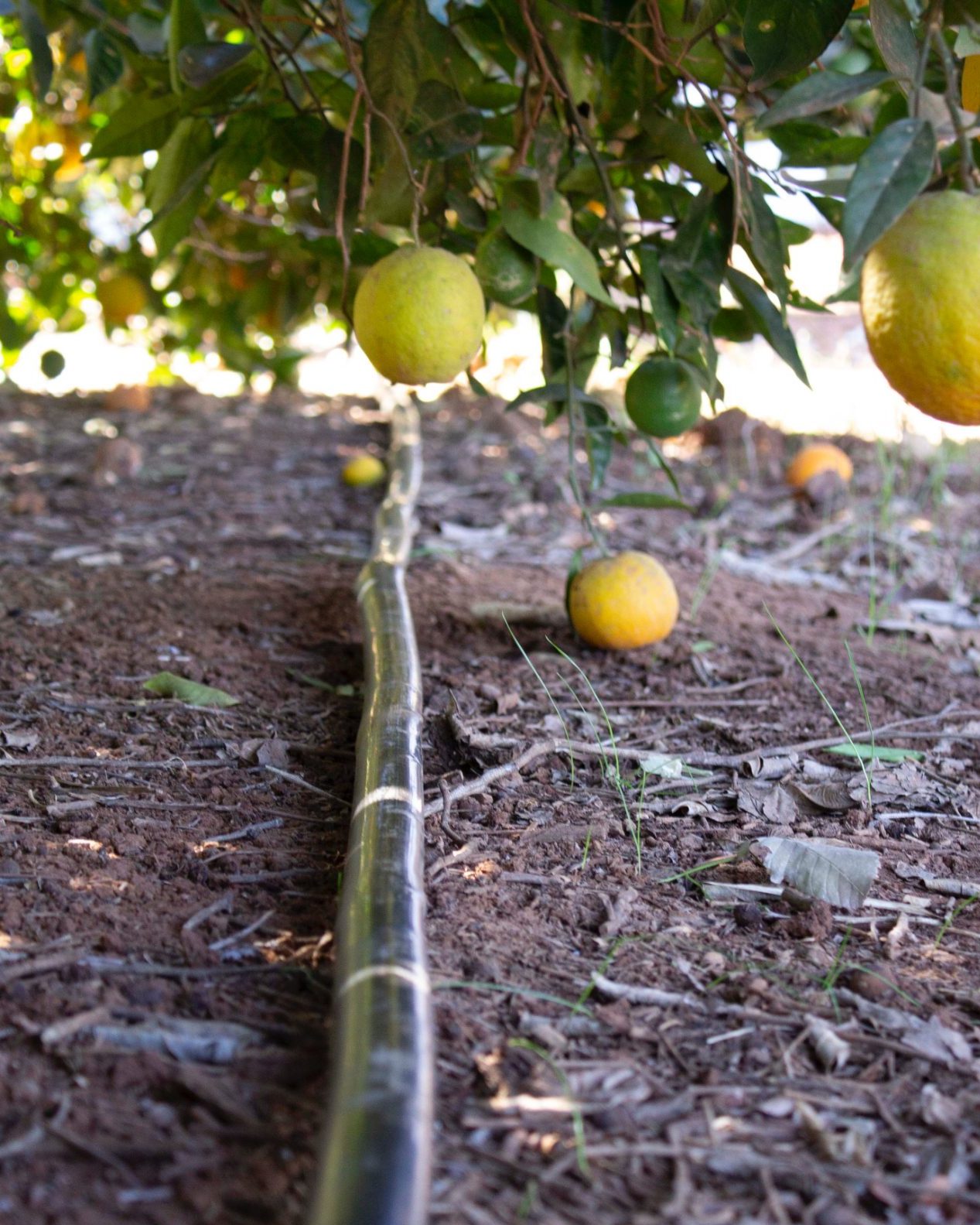An industry first utilising worlds best practice for Drip Irrigation

About
Next Generation Drip Irrigation System
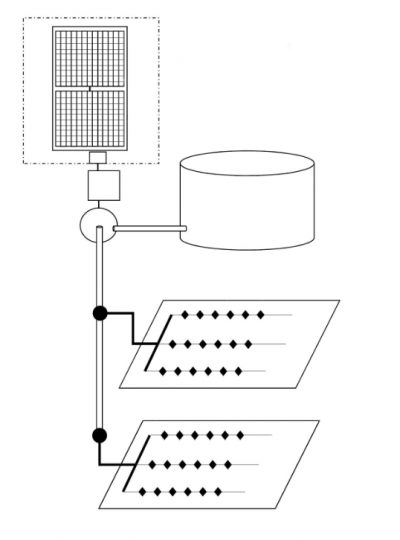
Drip Irrigation
Drip irrigation has now been used successfully for decades as our best solution to crop irrigation efficiency. Compared to flood irrigation it is an important technology to significantly increase the water efficiency and uniformity of yields in irrigated cropping.
Irrigation Efficiency v Energy Efficiency
A flood irrigation system will most often just use gravity (free energy) to provide water distribution to the crop. A drip irrigation system, will usually require a significant energy input to create pressurised water to push through a filtration system, a pipe distribution network and most importantly the DRIP EMITTERS along the plant row.
Drip Tube Emitters – New v Old School
Pressure compensating emitters (PC emitters) provide a uniform application rate over a wide range of pressures. They become the standard for most drip irrigation systems for the last 15 years. PC emitters are more complicated, more prone to clogging, have a lower lifespan and are more expensive than non-compensated emitters to manufacture. On the positive of sorts, they make the hydraulic design of a drip irrigation system very simple if you can afford to ignore ENERGY input costs. The higher the pressure the system runs at, the easier it is to obtain uniformity albeit very inefficiently.
The original drip tube emitters (now called non-compensating) still exist and are mostly used in annual crops. They are elegant in their design, cost-effective and reliable – no moving parts, with wider flow passages than pressure compensating emitters. Importantly, they are variable in their flow rate output based on mathematics and pressure.
Introducing SolarDrip Irrigation System
SolarDrip is the next generation of applying a simple formula for plant water usage – Solar Radiation is a valid estimate for plant water usage throughout a growing season.
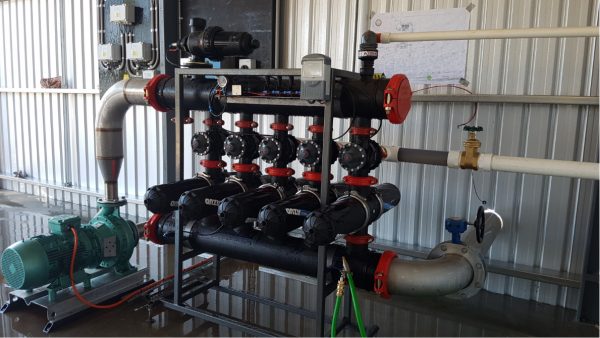
 = No Pumping Costs
= No Pumping Costs
Case Study
Mac Burge | Citrus Grower | Riverina District, NSW

Daily Power Consumption
The Challenge
Mac Burge, Citrus Farmer located in the Riverina, NSW has an 18.6ha (50 acres) established citrus orchard that requires a drip irrigation system with a few specific features and an industry first configuration.
Current Configuration
- Inefficiently flood irrigated using gravity pipelines and risers
- No electrical power available & electrical infrastructure upgrade unviable
- The client wants to be carbon neutral without generator back-up
- Solar power is the most viable power source
- However, existing drip irrigation systems require constant pressure which is difficult to achieve with solar due to continuously varying solar radiation levels throughout the day
Planning
- Calculate the maximum application rate for the crop, using historical evapotranspiration (ET0) data x maximum variable crop factor for citrus = in this case, 8.6mm/hectare/day
- Required maximum daily water volume = 18.6 ha x 8.6 mm/day = 1.6 Mg/L per day
- Typically, maximum daily plant water usage occurs in Australian summers – generally for up to 30% of a month (approx. 10 days)
- To ensure the system can exceed the maximum monthly requirements, it is configured to provide an average daily output of 1.6 Mg/L per day
- Careful planning and sizing of the solar panel configuration is required to maximise lowest radiation levels at the start and end of the day
Solution
- Design and deploy an autonomous, solar-powered, drip irrigation system utilising non-pressure compensating emitters. In this situation, Metzer LIN driptube.
- Technically, as a component of ETo, solar radiation contributes around 88% of its value. Other components influencing ET0 including wind, temperature and humidity make up for the remaining 12% ± 4.6%.
- It is, therefore, reasonable to conclude that a drip irrigation system application rate driven purely by solar radiation is a valid way to estimate plant water usage over the year.
Targets
- A flow rate variation of less than ± 5% across a variable range of pressure inputs was used as the benchmark design target over the entire 18.6 Ha.
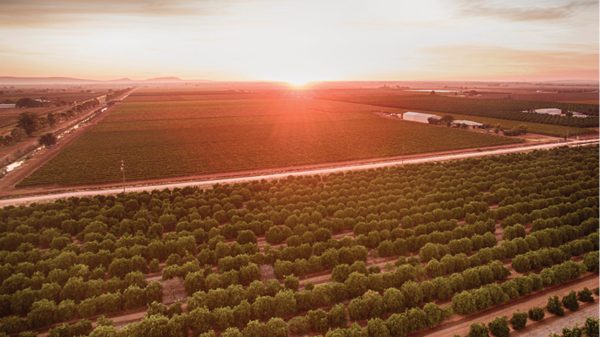
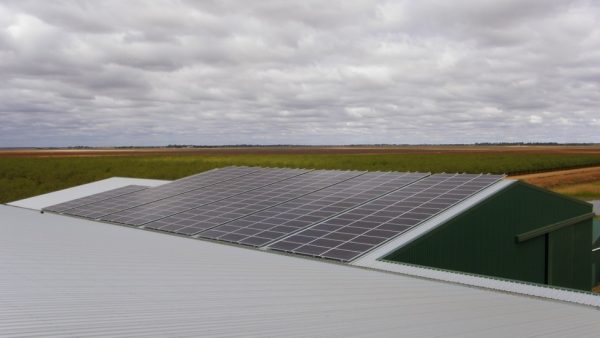
Use the sun for power & irrigation scheduling
Contact
Request an obligation free consultation to better understand how SolarDrip meets your irrigation needs.
